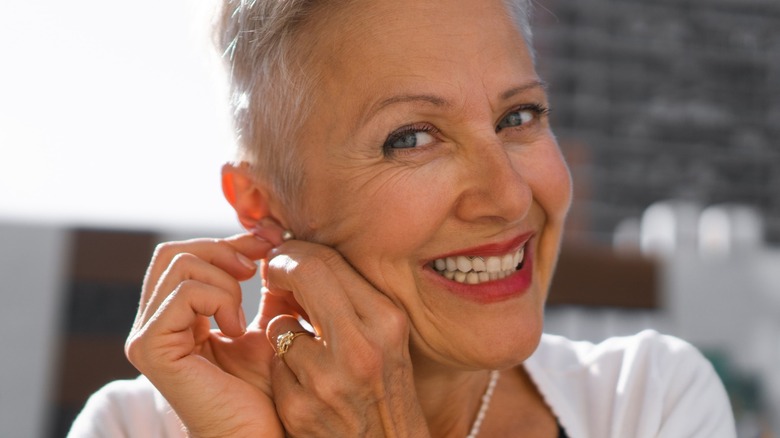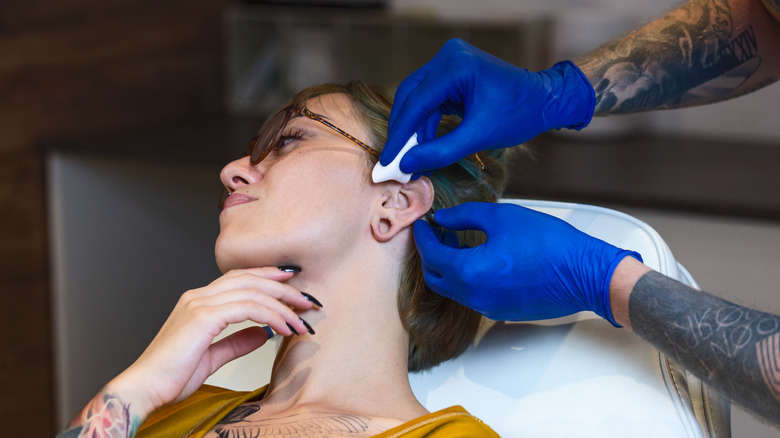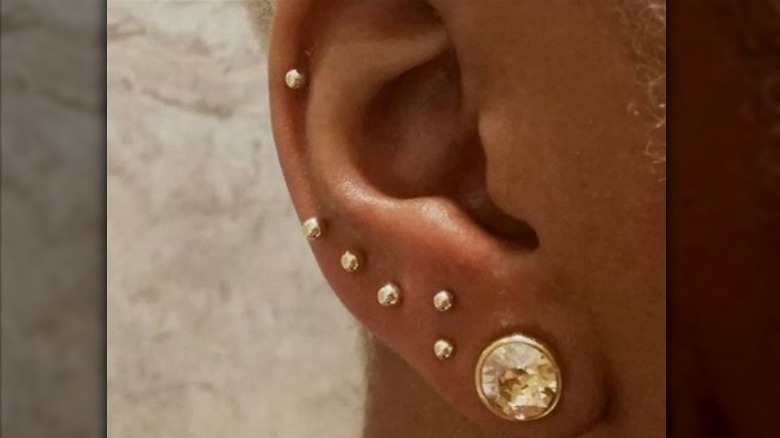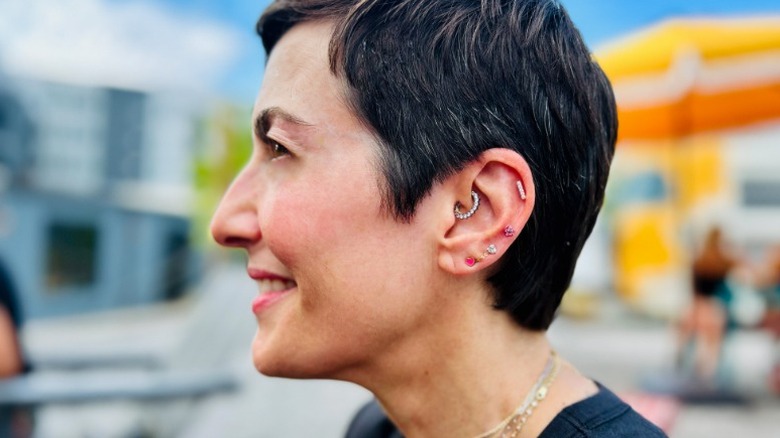Earscaping Is The Piercing Trend All About Customization
This season's earscaping piercing trend is not only a nod toward the influence of more body-centered appreciation and wellness, but it's also an opportunity to add accents to one of the most sensitive, sensual parts of the body. When it comes to personalization and fashion, trends can be as fleeting as single-use fast fashion or as permanent as major plastic surgery. Regardless of the platform or convention, what's the point of all of this data if every algorithmitized experience isn't to curate a look that solely suits you? Customization is key.
Whether you're thinking about adding to your piercings or taking a deep dive into first-time earscaping, be sure to research all of the ways you'd like to customize your look and why. As we all know, there's more permanence to piercings. Enduring self-expression tends to indicate more than style; it hints at personal value systems, practices, and personality.
Of course, the jewelry you choose is limited only to your imagination. With piercings, you can experiment with proportion, style, and a mixture of materials.
What is earscaping?
Earscaping is exactly what it suggests. Like the foliage that adorns our homes and businesses, earscaping is "landscaping" of the ears with jewelry. Studs, a women-owned piercing startup with 19 locations across the United States, is quickly becoming the go-to for needle-only piercings. Owners Anna Harman and Lisa Bubbers, coined the term "earscaping" and like many popular jewelry stores, they sell earscaping sets of earrings in-store as well as online. Whether you're looking for lifestyle branding or a new way to feature your statement earrings for your perfect outfit, earscaping is a fashion trend that is customized to be exactly what you want it to be — all about you.
Why do we pierce?
Piercing is one of the oldest forms of body modification. Dating back thousands of years, ancient origins suggest ear piercing was in practice as late as the Copper Age (3500 to 2300 B.C.). In 1991, the discovery of a frozen and fossilized human — Otzi the Iceman — changed much of what we know about our developing humanity, including fashion. Otzi, who also dates back to the Copper Age, was found face down having been shot by an arrow in the back, but he also had a small hole in his earlobe suggesting that ear piercing was a part of the culture in that region at least over 5,300 years ago. Thousands of years later, instead of hunting and gathering with primal weapons, we're able to spend time luxuriating on our creative influences using beauty, not survival, as the sole impetus. And we're also doing that with earscaping.
Piercing has been around long enough to symbolize everything from religious significance, to fashion, to gender identity, and even for medicinal beliefs. As an erogenous zone, some feel ear piercing plays a role in their pleasure and some view the practice as quite the opposite — to deform. Some cultures pierce babies' ears within hours after birth. Some seek medical professionals to do the job, while some do their piercings at home, and some go to the mall because their friends are doing it. Regardless of why, it's recommended to use sterile equipment and keep the piercing site as clean as possible, especially while it heals.
You do you
Educator and former fashion buyer Liz Ross (pictured) says that with her short hair, she feels "having a 'decorated' ear is a great balance of delicate and edgy." When asked if she did her earscaping all at once she explains, "I did it progressively, for two reasons. One, is the healing process and time. At first, I did two cartilage piercings, the same ear at the same time, and the combined swelling was really tough for a couple of days. I took it slow after that." When asked how Ross got her piercings, she said she likes to do one piercing at a time "to see what I like or where the next one should be. It's like building a wardrobe. I ask myself what would look good, what is needed to be balanced?"
Greek philosopher, Epictetus famously said, "We have two ears and one mouth so we can listen twice as much as we speak." If this is true, let us adorn where we listen and illuminate whatever we need to hear.



